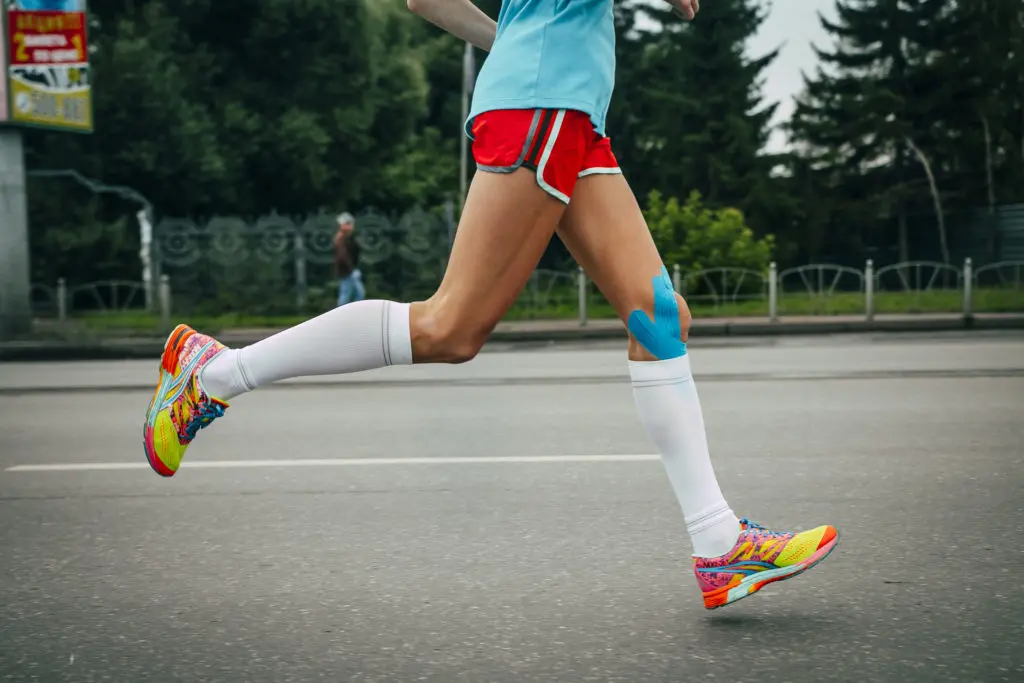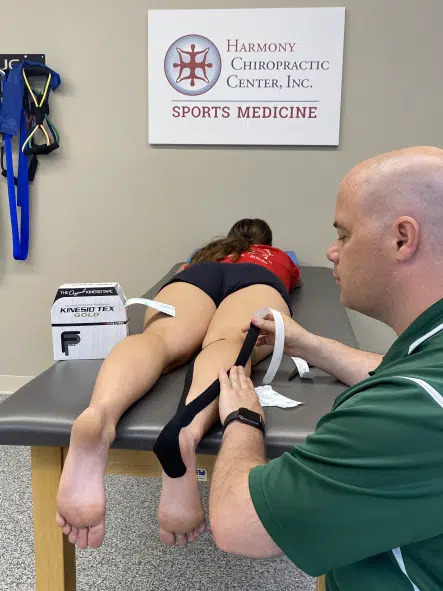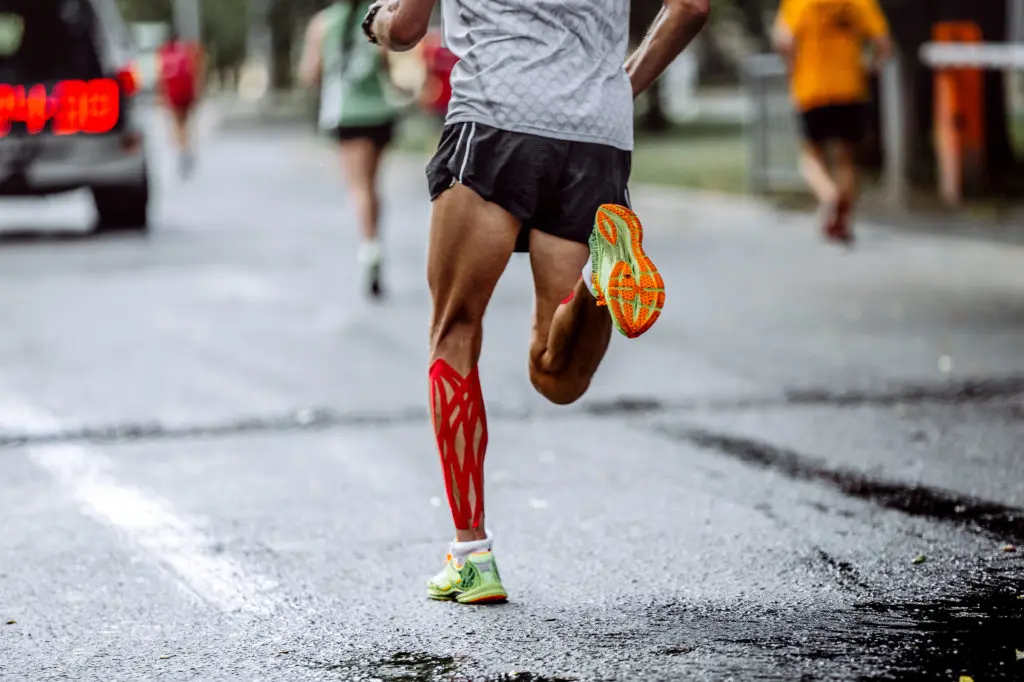Thoughts from the Expo
While hopefully many of you know that I have been writing articles for Footprints for a few years now (as well as being a long-time advertiser), most do not know my introduction to Toledo Roadrunners was with the Glass City Marathon Expo. Several years ago now, I went with a friend who was running the half marathon for his packet pickup at the Expo.
Considering what I do, I decided that it was a good idea. For the past eight Glass City Marathon Expos, I’ve been a booth vendor who has provided free KT taping to runners in and out of town. Over the years, I have had many people who were extremely happy to see that KT tape was being applied at the Expo, and I’ve had plenty of repeat customers over the years.
At the Expo, I’m almost always busy assessing and applying elastic therapeutic tape to a runner’s problems and there is often a line-up. Some runners decide that they need to go and buy shorts at one of the other vendors for me to KT Tape hard-to-reach areas.
Occasionally, I have had people who have dropped their pants in the middle of the expo so I could tape their hips. I tend to see the things that you would think that I would see. This year, nearly 20% of people complained of heel pain related to plantar fasciitis. Hamstring strains were common, but the most involved area was the knee taking up around 25% of complaints.
I’ve been doing Kinesio taping since I moved to Toledo in 2005. Back then basically nobody had heard of Kinesio taping as it had not been popularized in the Olympics yet. Since I was new to the Toledo area and new to practice, I decided that it would be a good idea to be credentialed. I wanted to specialize in something to differentiate me from other healthcare providers in the area, so I decided to become a Certified Kinesio Taping Practitioner (CKTP). I’m certain that I was the first healthcare provider in the area to offer Kinesio taping but I ended up being the second CKTP. It became the first of many credentials. So, what I am saying is that I have a little experience with it.

KT Taping Yourself
One thing that has changed over the years at the Glass City Marathon Expo is that more and more people are KT taping themselves. In fact, I was surprised this year at the number of people who came to the booth to ask me how to tape themselves. These questions inspired this article, but I have always had issues with people taping themselves. Unfortunately, these people leave disappointed because I wouldn’t have the time at the Expo to teach them. It would take me more time to teach someone how to do it than to just do it for them. Most just tape themselves wrong and I have seen huge blisters as a result of self-taping. YouTube has led many runners astray.
There is a multitude of reasons why I don’t teach patients how to KT tape themselves. There have been exceptions in some situations where I have sent patients with tape because they were leaving to do an Ironman out west or some other special Marathon in a distant east coast city and we needed to be sure that they were taped for the event. But for the most part, I don’t teach patients how to do it themselves.
PROPER DIAGNOSIS BEFORE KT TAPE
The biggest reason that people shouldn’t be applying KT Tape themselves is that much of the time, they do not have an accurate diagnosis of what their problem is. People think that it’s their patellar tendon when it’s really a meniscus problem or maybe a patellar tracking problem. There are different ways to do the taping to accomplish different results depending on what the challenge is. When you’re trying to get somewhere, it helps to have a map to get there quickly. Having an accurate diagnosis will allow you to arrive at the proper treatment more quickly. At the Expo, I examine every patient to determine what they need. While a person often needs the same taping, it can change. People are creatures of habit that continue to tape their ankle issue in a certain way even though the diagnosis can change, especially from injury to injury.
Having an accurate diagnosis and a knowledge of anatomy and physiology also allows you to avoid situations where you should not use the tape. The following issues should never have elastic therapeutic tape applied:
- Cancer
- Infection or Fever
- Deep Vein Thrombosis (Blood Clots)
- Open Wounds
- Altered sensation due to neuropathy or stroke
- Extreme allergic reactions to adhesives
KT tape can change blood flow in an area, so infection or cancer could be possibly spread. There are other conditions where it may or may not be a good idea to use Kinesio tape which includes skin sensitivities, thinner skin, Diabetes, Congestive Heart Failure, renal Insufficiency, and pregnancy.

KT Tape is a Band-Aid
Here’s a little secret about KT Tape … it doesn’t fix anything.
Don’t get me wrong – I am not saying that it is a placebo. KT Tape can be extremely effective and can reduce pain using the Gate Control Theory of Pain. Depending on how it is applied, it can also temporarily correct biomechanical faults. But the majority of the time, the actual problem remains. I have had rare occasions where KT Tape has fixed a low priority knee issue or mild plantar fasciitis while I was working elsewhere. But the old problems often return when the tape comes off. I know runners love to be told that they can’t run [heavy sarcasm] so I need something that will allow them to continue to run, but not alter their gait.

Pain is supposed to be a warning to your body to prevent injury. People who are covering up the pain with a multitude of pain pills or something like KT tape can be doing more harm than good. You are supposed to fear the pain a little because pain is supposed to change your behavior. Runners in general are a different group than the general population because you have conditioned yourself to push through the pain. “It hurts but I’ll just run through it.” We want protective mechanisms in place to stop you from getting further injured, but we don’t want to add an additional layer of dysfunction/compensation that can be difficult to remove later on.
Since KT tape is not a long-term solution, there are typically other therapies that are needed for a lasting fix for the problems that people have. Corrective exercise, myofascial release (Graston Technique), chiropractic adjustments, massage therapy and cold laser therapy are all things that can help a person heal and recover. Elastic therapeutic taping is basically just a Band-Aid that can allow somebody to run, compete in their sport or go to work and get through the day. I just don’t want runners to cause harm by not addressing the problem.
